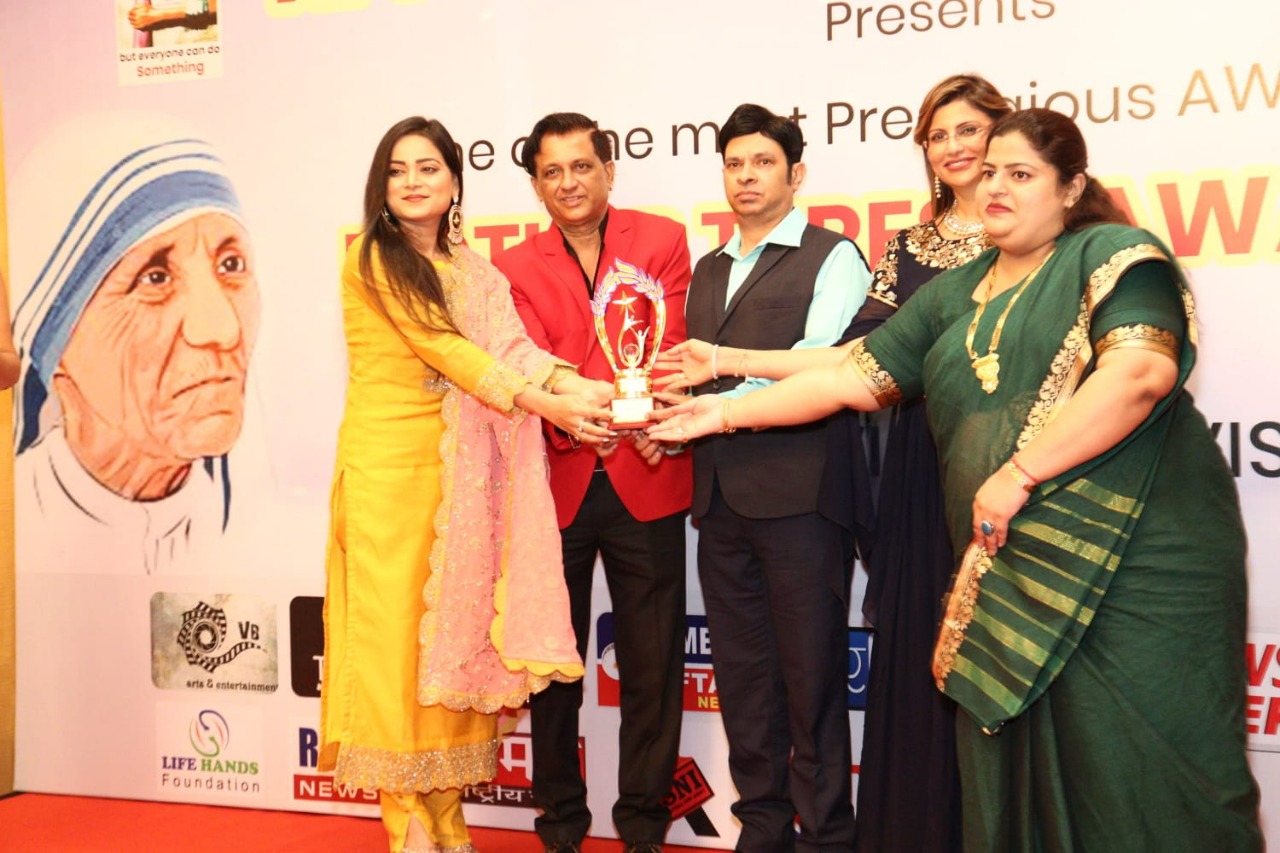Shantanu Bhamare Awarded with Prestigious Mother Teresa Award by Ray Of Hope Mumbai
Shantanu Bhamare Awarded with Prestigious Mother Teresa Award by Ray Of Hope Mumbai, organizer of the event was Founder of Ray Of Hope Mumbai – Edward Pereira. Shantanu Bhamare received the award by hands of Shri Edward Pereira, Dr. Parin Somani (Philanthropist , TEDx Speaker & Mrs Queen of IN 2021) & Dolphin Dubey (TV Serial Actress).
Shantanu Bhamare got awarded for his contribution in various social work for the society at large. He is Founder & President of Giants Group Of Pune Metro (a social group affiliated to Giants International). Through this group he did many projects like Save Girl Child, Blood Donation, Eye Donation, Tree Plantation, helping underprivileged students by giving them schoolbooks, school uniform and free tuition to the underprivileged students. He also helped old age home Nivara in Pune by spending 4 hours with them and doing empathic query of old age home residents at Nivara, when he came to know they have shortage of food grains, Shantanu provided them food grains as well as medical kit to take care of their health. old age home residents where very happy that someone from outside came, spent 4 hours with them, did their empathic query, helped with food grains and medical kit, they further expressed that even their own child does not come and visit them and they do not ask how they are, how they are staying in old age home, what challenges they are facing at this age, etc.

Shantanu Bhamare released various awareness videos for Indian Citizens at large during high peak Corona times which started in the country in March 2020. Shantanu took help of his strong Bollywood contacts like G. K. Desai (Producer, Actor & Writer), Neena Kulkarni (Actor, Director & Producer), Kishori Shahane (Actor & Producer), Rakesh Upadhyay (Creative Producer, Actor & Singer), Shashi Sharma (Actor), Vijay Patkar (Actor), Laila Panda (Actor, Dancer & Trained Classical Odissi Dancer), Megha Sampat (Dance Director), Shiv Thakare (Choreographer & Dancer. Bigg Boss Marathi 2 winner), Eisha Singh (Actor, best known as Dhani from Ishq Ka Rang Safed), etc. Shantanu taken their video bytes which covers what Indian Citizens should do and what they shouldn’t do in Corona pandemic, also appealing Indian Citizens to follow guidelines laid down by the government. Video bytes were in different languages like English, Hindi, Marathi & Bengali to cover all the Indian Citizens. Concept behind taking Bollywood Stars Motivational Video Messages was, as we all know that what Bollywood Stars say is taken seriously & followed by all the Citizens as they are their fans / audience.
Shantanu Bhamare is an International Award Winner in Leadership which he got at Denver, USA by Project Management Institute, USA, he is also awarded with Rajshree Shahu Samaj Ratana (Social Diamond) Puraskar (Award) for his significant contribution in Information Technology, Education & Social Work, Best Producer of Maharashtra Award in 12th Maharashtra Ratna Prestigious Awards By Aap Ki Awaz Foundation, Bollywood Legend Award in 3rd Bollywood Legend Award 2021 By Krishna Chouhan Foundation and many more Awards.
Shantanu Bhamare is Producer & Actor, his banner “Shan Se Entertainment” is registered under Indian Motion Pictures Producers’ Association (IMPPA).
Shantanu Bhamare, who is a mix of art and commerce, he did debut in Rajeev Choudhary and Ashok Tyagi film “RED” against famous Kamlesh Sawant (Drishyam fame worked with Ajay Deegan & with Amitabh Bachchan Ji in Bhoothnath Returns, etc.) Kamlesh all praises Shantanu’s work in “RED”, This significant role of a Jailer is portrayed by Shantanu is coming up as highlight of the film – “RED” ! Shantanu, being a stage & theatre artist was able to enact this powerful role of a jailer in front of veteran actor Kamlesh Sawant without any retake!





